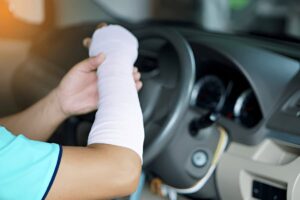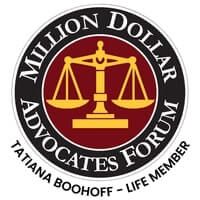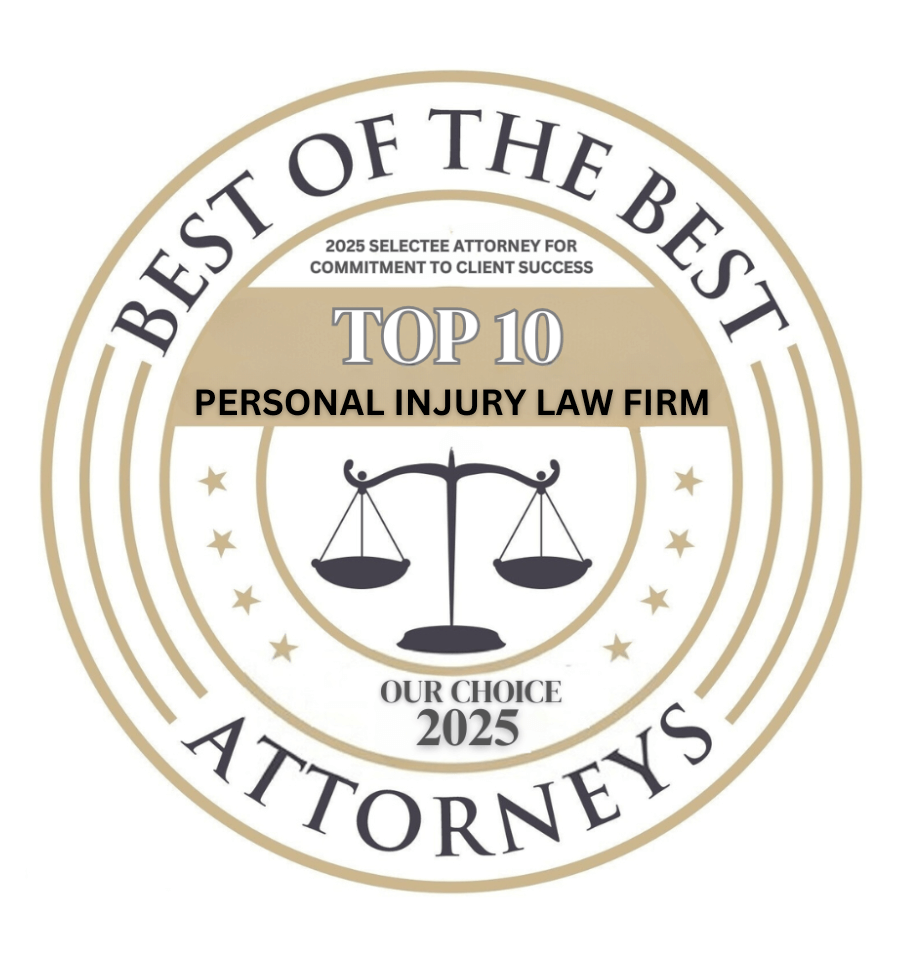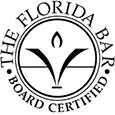Beyond the Bills: What Damages Can You Claim After a Distracted Driving Accident?
A driver looking at a phone instead of the road caused your injuries, and now you face the consequences of their carelessness. Holding that negligent driver accountable means pursuing compensation for every loss you have suffered.
The types of damages you may claim after a distracted driving accident fall into three main categories: economic, non-economic, and punitive damages. These categories cover everything from your direct financial costs to the profound personal impact the injuries have on your life.
A car accident lawyer can help you file a claim to recover what was taken from you. It provides the resources you need to focus on your recovery and rebuild.
Table of Contents
ToggleUnpacking the Two Main Types of Damages
When you pursue a personal injury claim, the compensation you seek is referred to as damages. These are broadly sorted into two distinct types that cover every aspect of your losses.
Economic damages cover all the measurable financial costs you incur because of the accident. Non-economic damages address the personal, non-financial ways the injury has affected you. A complete claim accounts for both.
Economic Damages: The Tangible Costs of an Accident
Economic damages are the foundation of your distracted driving accident claim. These are all the specific, verifiable financial losses resulting directly from your injuries. Think of them as every bill, receipt, and lost paycheck connected to the accident.
You need to collect documentation for these losses to build your case. A strong claim includes proof for every dollar of financial harm. These damages cover not only your current expenses but also the costs you’re projected to face in the future.
Your claim includes compensation for many different economic costs, including:
- Medical Expenses: This includes every medical cost you have from the moment of the crash, such as ambulance rides, emergency room treatment, hospital stays, and doctor’s visits. It also covers the cost of surgeries, prescription medications, medical devices, and physical therapy.
- Future Medical Care: For serious injuries, recovery takes time. Your claim accounts for the projected costs of future treatments, including additional surgeries, long-term rehabilitation, in-home nursing care, and any ongoing medical supervision your doctors expect you’ll need.
- Lost Wages: You receive compensation for the income you lost while recovering from your injuries while out of work. This compensation is calculated based on your pay stubs, from hourly wages to salaries and commissions. All the time you took off due to the accident is part of the calculation.
- Diminished Earning Capacity: If your injuries prevent you from returning to your previous job or limit the type of work you perform, you have a right to compensation for this loss. It addresses the difference between your pre-injury and post-injury earning potential over the course of your working life.
- Property Damage: This damage covers the cost to repair or replace your vehicle and any personal items destroyed in the crash. An independent appraisal often determines the true value of your vehicle.
Non-Economic Damages: The Intangible Losses From a Collision

Non-economic damages address the very real, but non-financial, harm that a distracted driving accident causes. You cannot easily put a price tag on these losses, but they’re a significant part of what you have endured. These damages recognize the profound human cost of the collision.
These losses are deeply personal and different for everyone. They relate to how the injury has affected your daily life, your emotional state, and your ability to enjoy the things you once did. Acknowledging this harm is a key part of justice.
A settlement or award considers several forms of non-economic harm:
- Pain and Suffering: This compensates you for the physical pain, discomfort, and general suffering your injuries caused. The severity and duration of the pain and the nature of the medical treatment are all factors in this calculation.
- Emotional Distress: An accident is a traumatic event. This damage addresses the psychological impact, including anxiety, depression, fear, sleep disturbances, and post-traumatic stress disorder (PTSD) that you experience.
- Loss of Enjoyment of Life: This part of a claim recognizes that your injuries may stop you from participating in hobbies, activities, and life experiences you valued before the accident. It addresses the loss of your ability to live your life as you once did.
- Disfigurement and Scarring: Permanent scarring or other physical disfigurements have a lasting impact. You may seek compensation for this ongoing harm.
Understanding Punitive Damages
In some rare cases, you may also pursue a third category of compensation: punitive damages. These are different from economic and non-economic damages. Their purpose isn’t to compensate you for a specific loss but to punish the at-fault party for particularly reckless behavior and deter others from acting similarly.
A claim for punitive damages requires a higher standard of proof. You must show that the at-fault driver’s actions were grossly negligent or intentionally malicious. Simply being careless is not enough to warrant them.
Distracted driving that involves extreme circumstances may lead to punitive damages. For example, a driver who was texting while also speeding excessively through a school zone may face punitive damages.
Their purpose is to send a clear message that such extreme disregard for the safety of others is unacceptable. A personal injury lawyer can determine if seeking punitive damages is an option in your claim.
How Your Own Insurance Factors Into the Claim
In some states, your own insurance policy plays a role first, regardless of who was at fault. Some states, like Florida, have Personal Injury Protection (PIP). These policies are often the initial source of payment for medical bills and lost wages up to your policy limits.
You add your PIP coverage to your own auto insurance policy. Once your losses exceed your own policy’s limits, you then pursue a claim against the at-fault distracted driver’s insurance company for the remainder. The process for this depends on state law.
Even when you use your own insurance, the other driver is still responsible for the accident. Your claim against them seeks to cover all the damages your own policy does not. The at-fault party is ultimately held accountable for the full scope of the harm they caused.
Common Examples of Distracted Driving
Driver inattention falls into three main categories. Any action that pulls a driver’s focus from the road puts others at risk. Recognizing these behaviors helps show how easily a driver becomes a danger.
A driver’s distraction often involves more than one of these categories at the same time. Texting is particularly dangerous since it encompasses all three types.
Examples:
- Visual Distractions: These distractions happen when drivers take their eyes off the road. Common examples include looking at a GPS screen, watching something on a phone, or turning to look at passengers in the back seat.
- Manual Distractions: These distractions occur when drivers take their hands off the steering wheel. A driver eating, adjusting the radio, or reaching for an object inside the car is manually distracted from driving.
- Cognitive Distractions: Mental distractions can prevent a driver from operating their vehicle safely. Engaging in a stressful phone call, daydreaming, or feeling intense emotions can distract a driver from the road, even if their eyes are pointed forward.
How a Lawyer Helps You Claim Damages After a Distracted Driving Accident
A lawyer acts as your advocate through every stage of the process. They handle the complexities of the legal system so you have the space to heal.
Investigating the Accident and Proving Negligence
A lawyer launches a full investigation into the crash. They know how to secure evidence that proves the other driver was distracted.
This includes obtaining police reports, subpoenaing cell phone records, finding and interviewing witnesses, and hiring accident reconstruction experts to show exactly how the collision occurred.
Calculating the Full Value of Your Claim
An attorney identifies all possible damages in your case. They gather every medical bill, proof of lost income, and property damage estimate. They also consult with medical and financial experts to project the costs of your future care and any loss of earning capacity.
This preparation clearly shows the total economic damages from the distracted driving accident. For non-economic damages, your personal injury lawyer will use legal precedent and their experience to assign a fair value to your pain and suffering.
Managing All Communications
Your attorney becomes the single point of contact for everyone involved in the claim. They handle all letters, phone calls, and negotiations with insurance adjusters. This protects you from saying something that might be used to devalue your claim.
A personal injury lawyer frees you from the stress of these constant communications while protecting your rights at every turn.
Negotiating a Fair Settlement
A lawyer knows the tactics that insurance companies use to minimize payouts. They build a powerful, evidence-based case to present to the adjuster. They leverage this evidence during negotiations to fight for a settlement covering all your past, present, and future damages.
Taking Your Case to Court
If the insurance company refuses a fair offer, your attorney can file a personal injury lawsuit and fight for you in court. They handle all filings, deadlines, and court procedures. They’ll present your case to a judge and jury to pursue the compensation you need.
FAQ for What Damages Can I Claim After a Distracted Driving Accident?
What Is the Difference Between Economic and Non-Economic Damages?
Economic damages are your specific, calculable financial losses, like medical bills and lost wages. Non-economic damages are your personal, non-financial losses, such as pain, emotional distress, and loss of enjoyment of life. Your personal injury lawyer will include both parts in your claim.
How Does a Personal Injury Lawyer Calculate Compensation for Pain and Suffering?
There isn’t a simple calculator for pain and suffering. Instead, your lawyer determines the value of your pain and suffering by considering many factors, including the severity and permanence of your injuries.
The intensity and duration of your pain, the type of medical treatment required, and the overall impact the injury has had on your daily life also affect the tabulation.
Do I Have a Claim if the Distracted Driver Was in a Company Vehicle?
Yes, you may have a claim against both the driver and their employer. Companies are often liable for the actions of their employees while they are on the job. A claim against a company may provide access to larger commercial insurance policies.
You likely still have a case even if an independent contractor, like a rideshare driver, hit you.
What if the At-Fault Driver’s Insurance Is Not Enough to Cover My Damages?
If the distracted driver’s policy limits are too low to cover your losses, you may be able to use your own Underinsured Motorist (UIM) coverage. This is a part of your own auto policy that helps make up the difference. Your attorney will explore all possible sources of recovery.
What Damages Am I Able To Claim After a Distracted Driving Accident if My Injuries Are Permanent?
If your injuries are permanent, the damages you claim will be significantly higher to reflect lifelong losses. This includes all future medical expenses, such as ongoing care and adaptive equipment.
You are also able to claim a lifetime of diminished earning capacity and higher amounts for permanent disfigurement, pain, and loss of enjoyment of life.
How Long Do I Have To File a Claim for Damages?

Every state sets a strict deadline for filing a personal injury lawsuit, known as the statute of limitations. If you miss this deadline, you lose your right to pursue compensation through the court system forever.
In Florida, you generally have two years to file a personal injury claim and four for property damage. Washington allows victims of distracted driving three years to file a claim. Contact a lawyer quickly to protect your legal rights and preserve crucial evidence while it is still available.
What if the Insurance Company Says I Was Partially at Fault?
This is a common tactic insurance companies use to try to reduce or deny a claim. Even if you are found to be partially responsible, state laws on comparative fault may still allow you to recover compensation.
For example, Florida allows you to recover damages as long as you weren’t 51% or more at fault. In Washington, you can always recover damages as long as you weren’t 100% at fault.
Turn Injustice Into Action
A distracted driver made a choice that changed your life, but you have the power to make a choice now. With the help of a personal injury attorney, you have the right to hold the at-fault party accountable and pursue the full compensation needed to protect your future.
Taking action sends a message that unsafe driving has consequences. Contact Boohoff Law, P.A. 24/7 at (813) 445-8161 for your free, confidential consultation.
Free Consultation
We Are Here For You 24/7
Reviews
– Elissa M.
“Really pleased with Boohoff Law! Received immediate responses when I had any questions. Treated amazingly by all staff … made this process a true breeze!”
– Caitlyn M.
– Brandy K.
Related Posts
Washington’s Chain Law Requirements: When Truck Drivers’ Failure to Chain Up Becomes Negligence
Washington Vehicular Homicide and Trucking Accidents: What Families Should Know
Washington PIP Coverage Explained: Why Your Insurance Pays First (Even When It Wasn’t Your Fault)
Recovery is personal.
We’re here for you.
We’re close by. And if you can’t make it to us, we’ll meet you where you need us, at home or in the hospital.
You're better off with Boohoff.











The information on this website is for general information purposes only. Nothing on this site should be taken as legal advice for any individual case or situation. This information is not intended to create, and receipt or viewing does not constitute, an attorney-client relationship.
Disclaimer: The results and testimonials presented on this website are based on the unique facts and circumstances of each case. Past results do not guarantee or predict similar outcomes in future cases. Every legal matter is different, and you should not rely on prior case results as an expectation of future performance.
available 24/7
(877) 999-9999
